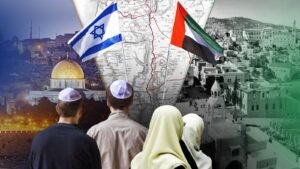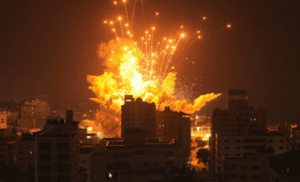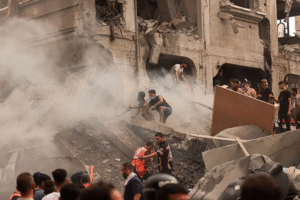
INTRODUCTION
Palestine is known as the Holy Land. It is present in the Middle East. The Masjid al-Aqsa has great importance for Muslims. Its capital city is Jerusalem. Its total area is 6,020 km. Palestine has a youthful population, and it is the place of Judaism and Christianity. Palestine has a long and complex history of conflict with Israel. In 1948, Israel was created as a Jewish homeland. The official language of Palestine is Palestinian Arabic.
Israel is a small country in the Middle East on the shore of the Mediterranean Sea. It shares borders with Lebanon in the north, Syria in the northeast, Jordan in the east, and Egypt in the southwest. Its capital is Jerusalem, and it is the only state in the world with a Jewish population. The total area of the state of Israel is 22,143 sq km, and the total population of the country is 9.7 million. The official languages of the country are Hebrew and Arabic.
HISTORY
Palestine is an old land in the Middle East, holy for Jews, Christians, and Muslims. Thousands of years ago, many empires ruled this land, like the Romans, Byzantines, and later the Islamic Caliphates. For many centuries, most people living there were Arabs, who were Muslims and Christians.
In the late 1800s, many Jewish people began moving to Palestine from Europe because they wanted to return to their historic homeland and escape persecution. After World War 1, Britain took control of Palestine. Tensions grew between Arabs and Jews over land and rights.
In 1947, the United Nations suggested dividing Palestine into two states: one for Jews (Israel) and one for Arabs (Palestine). The Jewish leader accepted, but the Arab leaders rejected it. In 1948, Israel declared independence. This led to the first Arab-Israeli war, and many Palestinians lost their homes and became refugees. Since then, there have been several wars and an ongoing conflict over land, rights, and Jerusalem.
PALESTINE AND ISRAEL PROBLEM STARTED
The main conflict between Palestine and Israel started in 1948, when the state of Israel was created. At that time, hundreds of thousands of Palestinians were forced to leave their homes. Palestinians call this event the Nakba (Catastrophe). After that, several wars took place:
- In the 1948 War, Israel was established, and many Palestinians became refugees.
- In the 1967 War, Israel captured more areas like the West Bank, Gaza Strip, and East Jerusalem.
PALESTINE – ISRAEL WAR 2023
The year 2023 marked one of the deadliest chapters in the long and troubled history of the Israel-Palestine conflict. Tensions had been rising throughout the year, with frequent clashes in the West Bank, Israeli raids in Jenin, and rocket fire from Gaza.
However, the situation changed dramatically on October 7, 2023, when Hamas launched a surprise attack on Israel. Militants crossed the border, fired thousands of rockets, and killed more than 1,100 people. Around 250 hostages were also taken back into Gaza. In response, Israel declared war. By October 27, the Israeli Defence Forces began a ground invasion, forcing hundreds of thousands of Palestinians to flee and leaving many parts of Gaza in ruins.
In November 2023, a temporary seven-day ceasefire was brokered by Qatar and Egypt. During this pause, hostages and Palestinian prisoners were exchanged. However, the truce quickly collapsed, and heavy fighting resumed. In the following months, Israel intensified its operations across Gaza, leading to widespread destruction and a growing humanitarian crisis.

In January 2025, the United States, Egypt, and Qatar mediated a large three-phase ceasefire deal. The agreement included prisoner exchanges, partial Israeli withdrawals, and the entry of humanitarian aid. But by March 2025, the truce had broken down. Israel launched Operational Might and Sword, a large-scale air campaign that killed more than 400 Palestinians in just a few days.
From May to August 2025, Israel initiated Operational Gideon’s Chariots, one of its largest ground offensives. By the end of this operation, Israel had seized control of nearly 65 percent of Gaza. At the same time, severe food and medicine shortages pushed Gaza into famine-like conditions. Thousands of children suffered from acute malnutrition, and aid agencies warned of a looming humanitarian catastrophe.
By September 2025, Palestinian casualties had surpassed 64,000. Most of Gaza City was under Israeli control, and millions of people had been displaced. Hospitals, schools, and infrastructure were destroyed, deepening the crisis.
The international community also reacted strongly. In November 2024, the International Court of Justice ruled Israel’s occupation of Palestinian territories illegal. The United Nations passed multiple resolutions calling for a ceasefire and supporting a two-state solution. By mid-2025, the New York Declaration was announced, including France and the UK, officially recognising a Palestinian state.
This war began with a sudden attack and has continued to bleed the region ever since. Thousands of lives have been lost, millions have been displaced, and peace still feels like a distant dream.
